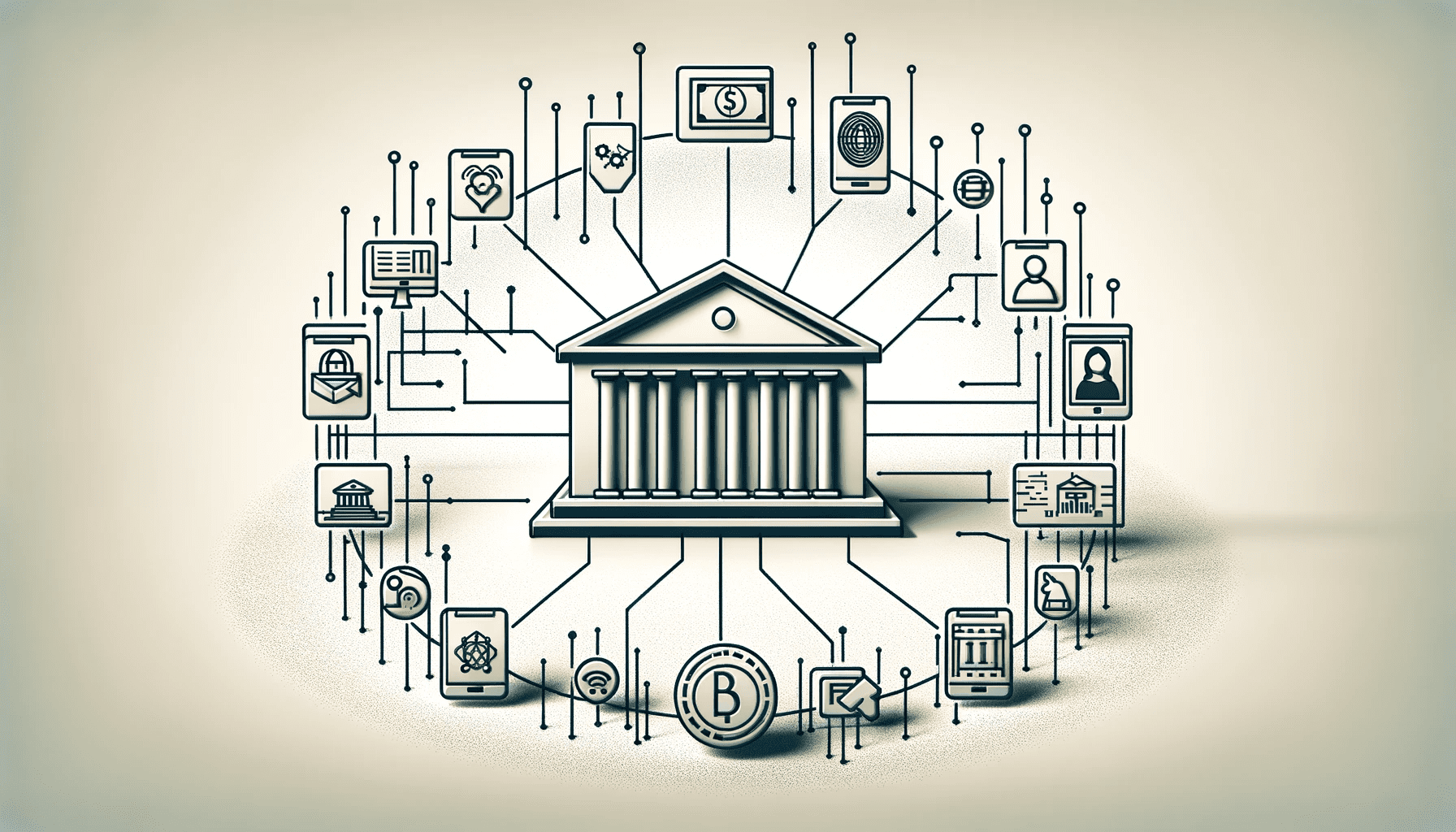money_gate
Exploring the Open Data Industry: Understanding Its Importance and Impact
Exploring the Open Data Industry: Understanding Its Importance and Impact
As a market leader in corporate services, GBO has a unique vantage point from which to observe the developing landscape of open data.
We have compiled a detailed research report on the basics, benefits, and challenges of open data, drawing on our years of experience and expertise in the field. Our study’s findings should help companies, governments, and individuals better understand the open data landscape and tap into its potential for creativity, openness, and cooperation. Come with us as we investigate the open data sector and the impact it will have on the future of business and society.
Modern technology is now inextricably linked to open data, which fosters collaboration among different stakeholders while fostering innovation and transparency. This study aims to present a comprehensive overview of the open data market, outlining its fundamentals, advantages, and difficulties while highlighting its significance for businesses and the general public.
What is Open Data?
Open data is defined as information that is unrestricted by copyright, patents, or other control mechanisms and is freely accessible to anyone for use. Governments, organizations, or individuals can produce open data, which should be made available in a machine-readable format to make processing and analysis simple.
How Open Data Works
By promoting data sharing and reuse, open data enables people and organizations to develop new goods, services, or insights based on this knowledge. Governments and organizations make open data readily available to the public by publishing it on a variety of platforms and repositories. The data can then be downloaded, examined, and used for a variety of tasks like research, decision-making, developing applications, or business intelligence.
Types of Open Data
- Information about public services, spending, laws, and demographics is referred to as government data.
- Maps, satellite images, and other geographic information are all examples of geospatial data.
- Climate, air quality, water resources, and biodiversity-related data are all examples of environmental data.
- Health information includes disease prevalence data, public health statistics, and results of medical research.
- Information on public transportation systems, routes, and schedules is referred to as transportation data.
- Data on employment, income, trade, and market trends are all considered to be economic data.
Open Data APIs
A set of guidelines known as an Application Programming Interface (API) enables communication between different software programs. Developers can directly access and incorporate open data into their applications, websites, or data processing systems thanks to open data APIs. Developers can avoid manually downloading and updating datasets by using APIs to automatically retrieve the most recent data.
Difference Between Open Data and Public Data
Although open data and public data are frequently used synonymously, they have distinct differences. Both types of data are available to the general public, but only open data is explicitly unconstrained in terms of usage and dissemination. On the other hand, there might be restrictions on how public data can be used, like fees or prohibitions on commercial applications.
Purpose of Open Data
Transparency, cooperation, and innovation are the main goals of open data. Governments and organizations can increase citizen accountability and trust by making data freely available. To address urgent challenges and spur innovation, open data promotes collaboration between stakeholders, including researchers, businesses, and policymakers. Open data also makes it possible for people and companies to develop new goods and services, which increases economic growth and competitiveness.
Benefits of Open Data
- Open data makes it possible for citizens to keep tabs on government activity, which increases transparency and accountability in public institutions.
- Enhanced stakeholder collaboration: Open data encourages stakeholder collaboration, which results in better decision- and problem-making.
- Access to open data encourages innovation and the creation of new goods and services, which helps to drive economic growth and job creation.
- Making informed decisions: Open data gives decision-makers important information they can use to make fact-based choices that result in more efficient policies and resource allocation.
- Enhanced efficiency: By locating waste and duplication, open data can assist businesses in streamlining their operations and cutting costs.
Benefits of Open Data for Businesses
- Data-driven decision-making: Organizations can use public data to make wise choices, improve operations and locate fresh market prospects.
Access to open data enables businesses to develop new products and services that are specifically suited to the needs of their customers or current trends. - Competitive advantage: Organizations that use open data can gain a competitive edge by monitoring market trends and staying up to date on industry developments.
- Enhanced customer engagement: Companies can give customers insightful information and enhance the overall customer experience by integrating open data into their offerings.
- Risk management: Potential risks like economic fluctuations, supply chain disruptions, or shifting regulations can be identified and reduced by businesses with the aid of open data.
Open Data Advantages and Disadvantages
Advantages:
- increased accountability and transparency in public institutions.
- enables the development of data-driven decisions and evidence-based regulations.
- stimulates economic expansion and innovation.
- promotes cooperation among stakeholders.
- helps companies find new market opportunities and improve operations.
Disadvantages:
- Data accuracy and quality: The usefulness and dependability of open data sources may vary depending on the data’s accuracy and quality.
- Privacy issues: There is a chance of unintentionally disclosing sensitive or personal information, which could cause privacy issues and possibly result in data misuse.
- Resources needed: Governments and organizations may need to invest heavily in infrastructure, personnel, and technology in order to collect, maintain, and publish open data.
- Digital divide: Different populations may not be able to take advantage of open data initiatives due to unequal access to technology and digital literacy.
Conclusion.
The open data sector has enormous potential to spur innovation, economic expansion, and institutional transparency. Knowing the nuances of open data as a specialist in data engineering is essential for maximizing its advantages and avoiding its drawbacks. Data professionals can utilize this important resource to bring about meaningful change and support the development of a more connected, informed, and collaborative world by understanding the significance of open data and its implications for organizations and the general public.
Open data framework
In order to effectively publish, manage, and share data, organizations, especially governments and public institutions, can use an open data framework, which is a set of principles, guidelines, and best practices. The framework lays out a thorough strategy for implementing open data, guaranteeing that information is available, useful, and valuable to a variety of stakeholders, including citizens, businesses, researchers, and developers.
An open data framework’s essential elements are as follows:
- Clear policies and principles that support open data initiatives should be outlined in the framework. Open by default, timeliness, accessibility, non-discrimination, and data quality are just a few examples of these principles. These guidelines help organizations make data accessible to the general public and lay the groundwork for open data governance.
- Legal and regulatory issues: A framework for open data should address the issues related to intellectual property rights, data protection, and privacy when it comes to sharing data. In order to guarantee compliance with relevant laws and regulations, it should offer instructions on licensing, anonymization, and other pertinent procedures.
- Data management: A key component of an open data framework is efficient data management. Processes and procedures for data collection, storage, upkeep, and archiving are included in this. In order to guarantee interoperability and machine-readability of the published data, it should also define data standards and formats.
- Data access and publication: The framework ought to include recommendations for how to make data available to users. Developing and maintaining open data platforms or portals, ensuring data discoverability, and offering documentation and metadata to assist users in comprehending the context and constraints of the data are all included in this.
- Data quality and integrity: Maintaining the open data’s credibility and usefulness is dependent on maintaining its quality and integrity. The framework should have procedures for validating, confirming, and cleaning data as well as instructions for dealing with data quality problems and guaranteeing the reliability and accuracy of the published data.
- An open data framework should encourage stakeholder involvement and communication, involving users in the publication of the data and seeking feedback to enhance the accuracy and applicability of the data. This can involve working with data users and communities through public consultations, workshops, and other means.
- Building capacities and providing staff with training are investments that must be made by organizations if an open data framework is to be implemented successfully. To assist staff in comprehending the concepts and procedures of open data management and in acquiring the skills required to effectively manage, publish, and use the data, this can include training courses, workshops, and other resources.
- Monitoring and evaluation: Creating a monitoring and evaluation framework for open data enables organizations to keep tabs on the development and results of their open data initiatives. This entails establishing performance indicators, gathering information on usage and user opinions, and assessing the framework’s success in achieving its goals.
Differences between open data vs open finance and open banking
Open data, finance, and banking share information to improve accessibility, transparency, and innovation. They address different data sharing issues and have different financial industry implications. Each concept’s differences are explained below:
- Open Data
Open data is freely accessible, usable, and shareable without copyrights, patents, or other controls. Open data covers government, healthcare, education, and transportation. Open data promotes transparency, collaboration, and innovation by making valuable data available to a wide audience. - Open Finance
Open finance is financial services-specific. Banks, non-bank financial institutions, fintech companies, and third-party providers share financial data. Open finance promotes financial data access and product innovation to create a more transparent, competitive, and innovative financial ecosystem. Standardized APIs allow secure data sharing between parties while protecting customer privacy and data security in open finance. - Open Banking:
Open banking shares banking data. With customer consent, banks and other financial institutions give third-party providers like fintech companies and other financial service providers access to customer account information and payment services. Regulations like the EU’s Revised Payment Services Directive (PSD2) and the UK’s Open Banking Initiative require banks to share customer data with licensed third parties via secure APIs.
Differences:
Scope: Open data covers many fields, while open finance and open banking focus on the financial services industry.
Purpose: Open data promotes transparency, collaboration, and innovation across sectors, while open finance and banking promote financial industry competition, innovation, and customer experience.
Regulation: Open banking, open data, and open finance can be driven by regulatory initiatives or voluntary industry practices.
Demographic, environmental, and economic data can be open data. Open finance and banking concentrate on financial data like account information, transaction history, and payment services.
Open data, open finance, and open banking share information to promote innovation, transparency, and collaboration. Open finance and open banking focus on financial services, while open data covers many fields and industries.
Organizations can lay a strong foundation for their open data initiatives by putting in place a strong open data framework, ensuring that the data they publish is useful, accessible, and advantageous to a variety of stakeholders. This can then spur innovation, openness, and cooperation, all of which can improve decision-making and public services.








